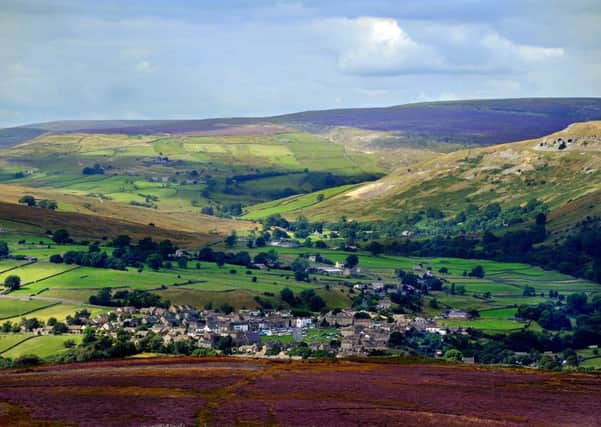A village at Swaledale's very heart


When setting off on family adventures such as this, with no particular final destination in mind, there can come a sudden awareness of how unexpectedly low on fuel the dashboard gauge is indicating, and so arriving in Reeth, coming down out of the hills and into civilisation, came as something of a relief.
This is a village that can trace its roots back to Saxon times. Once a tiny settlement on the edge of a forest, Reeth had grown to sufficient importance by the time of the Norman Conquest to be mentioned in the Domesday Book.
Advertisement
Hide AdAdvertisement
Hide AdIt may now be among the prettiest villages in the Dales but it was once one of the area’s industrial hubs. In its heyday it was responsible for 10 per cent of England’s entire lead production and while the industry is long gone – dying out in the early 19th century – its mark on the landscape has not been entirely airbrushed out of sight. When walking among the hills, expect to see ruined structures that tell of its industrial heritage.
The loss of traditional jobs hit villages like Reeth hard, but its farming community remains strong and in recent decades it has enjoyed income from tourism – prospects for which were certainly not damaged by the 2014 Grand Départ when the peloton whizzed through the village under blue skies and cotton wool clouds.
Most visitors to the village amble around The Green, treat themselves at Reeth Ice Cream Parlour and head to the Swaledale Museum, where hands-on exhibits and demonstrations tell the story of the local area from the Iron Age to the present day.
When fully dosed up on local scenery and culture, the village’s three food-serving pubs are an obvious draw and Reeth’s location along the Coast to Coast route ensures they are well frequented by walkers who tend to stay overnight between May and October – when the village is at its busiest – on their way to Richmond.
Advertisement
Hide AdAdvertisement
Hide AdJulie Harrowven and husband Roy are at the helm at The Buck.
“It doesn’t matter where you stand in Reeth, you’ll have a beautiful view,” says landlady Julie. “Sometimes on a drive I’ll pull over and just look at how beautiful it is.
“As somebody who works in the village and sees a lot of regulars, what stands out for me about the village is the effort that goes into everything, from young and old.
“The amount of things on our noticeboard about raising money for charity is amazing.
“There is a real community grit here. You can sense it.”
FACTS
Advertisement
Hide AdAdvertisement
Hide AdReeth lies where two of North Yorkshire’s dales meet, Arkengarthdale and Swaledale.
It is located on Wainwright’s Coast to Coast route, the Dales Way, adjacent to the Pennine Way and Mark Reid’s ‘Inn Way’ includes former coaching inn, The Buck, in the village.
The Dales Bike Centre at almost adjoining Fremington is said to be worth the trip for the cakes in its cafe alone.